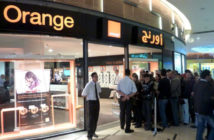Four North African countries and South Africa top the list of 30 nations on the continent in Symantec’s rankings for security risks on the Web, in a regional breakout of the security company’s 2013 Internet Security Threat Report.
In order, the rankings for the top five countries that got hit with the greatest number of Internet security threats in 2012 were Egypt, South Africa, Morocco, Tunisia and Algeria.
Nigeria, the most populous country in Africa, is in seventh place, while Rwanda, Djibouti and Burkina Faso grace the last positions.
The report, based on data from Symantec’s Global Intelligence Network, which the company’s analysts use to identify, analyze and provide commentary on emerging trends in the dynamic threat landscape, said there was a 42 percent surge during 2012 in targeted attacks worldwide compared to 2011.
“While the manufacturing industry has become the main target accounting for 24 percent of attacks, we also saw a wide range of companies coming under attack, not only large businesses, but increasingly SMBs as well,” Symantec said. “In 2011, 18 percent of targeted attacks were aimed at companies with fewer than 250 employees, but by the end of 2012, they accounted for 31 percent,” the report states.
Topping the malicious code ranking in 2012 for Africa are Egypt, South Africa, Algeria and Nigeria, and Tunisia, while South Africa, Morocco and Algeria top the African countries ranking in 2012 for phishing attacks.
“This year’s ISTR shows that cybercriminals aren’t slowing down, and they continue to devise new ways to steal information from organizations of all sizes,” said Sheldon Hand, Symantec’s territory manager for the Indian Ocean Islands, West and Central Africa, in a release. “The sophistication of attacks coupled with today’s IT complexities, such as virtualization, mobility and cloud, require organizations to remain proactive and use ‘defense in depth’ security measures to stay ahead of attacks.”
The ISTR noted that online criminals and spammers are less interested in email as an infection vector than they used to be “because social media is becoming so popular and it gives them many new ways to steal people’s identities or personal information and infect their computers with malware.”
However, as spammers move to social media, the report says, email spam volumes declined for the second year in a row, dropping from 75 percent of all email in 2011 to 69 percent in 2012. Email phishing rates also declined from one in 299 emails in 2011 to one in 414 in 2012.
The report said that in 2012, 50 percent of all targeted attacks were aimed at businesses with fewer than 2,500 employees, with the largest growth area being businesses with fewer than 250 employees. Undiscovered targeted attacks can collect years of emails, files and contact information. In addition, 2012 saw a 58 percent increase in mobile malware families compared to 2011, thus accounting for 59 percent of all malware to date.






